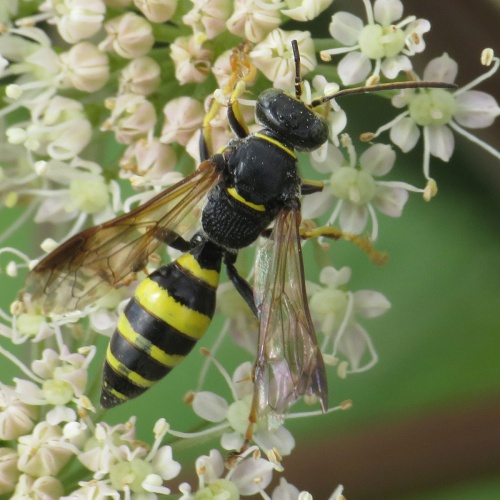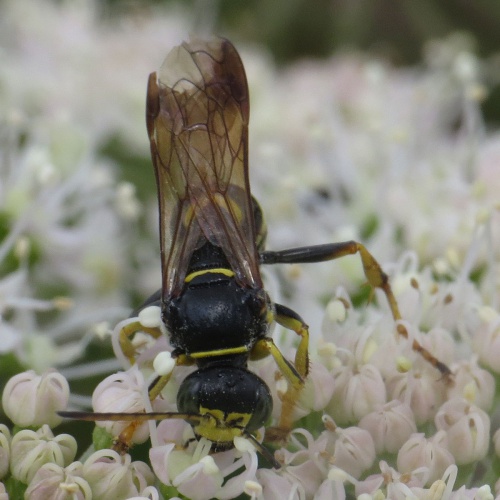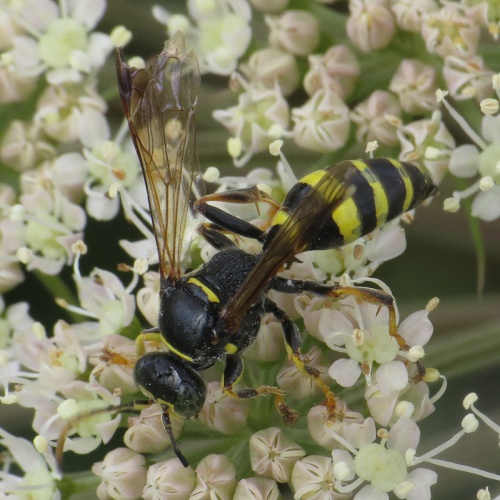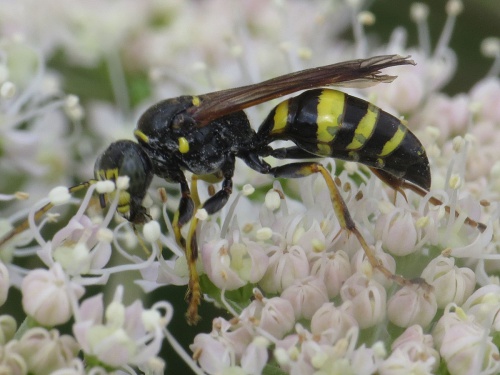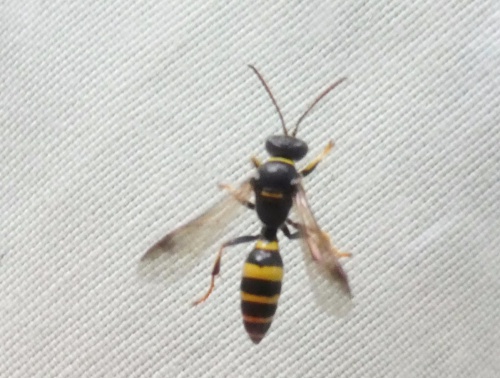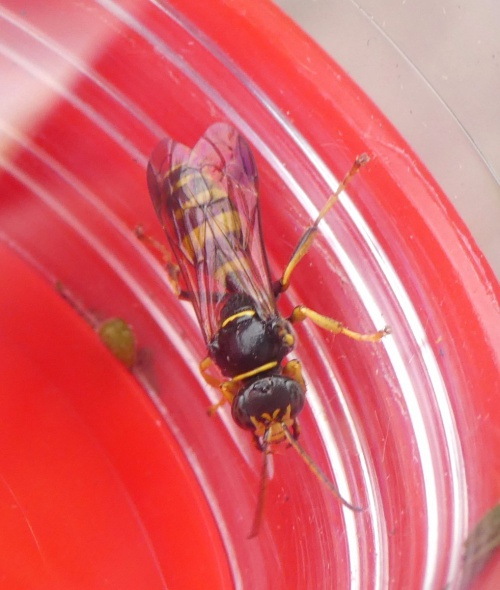Gorytes laticinctus
9 to 13mm. This is one of several very similar wasps in the family which require a specimen or excellent macro photos to identify. The first dorsal plate is straight-sided rather than bulged and the yellow on the second dorsal plate occupies not less than 1/3 of its length. The face is largely yellow, extending above the level of the antennal insertions.
Most solitary bees and wasps are difficult to identify, and can rarely be identified from photos taken in the field. All red-rated records should include a photo or set of photos of the specimen, illustrating the key characters taken from a standard key, which should also be referenced (e.g. ‘Falk, 2015’). The full set of key characters are generally not visible in field photos and photos are rarely sharp enough. To aid in the verification of your records, please include face shot, side, top and wings. The notes should state whether male or female, and explain how the specimen met the key characters. Although NS may not be able to identify the species even if these reference photos are provided, the photos will be stored with the record and may allow it be identified in future. Alternatively, NS will accept records identified by a recognised local or national expert, or that have been identified via BWARS’ Facebook https://www.facebook.com/profile.php?id=100065021433202 . If you have obtained this advice, please note the name of the person/organisation identifying the record in the ‘determiner’ field (e.g. ‘Stuart Roberts, BWARS Facebook’) rather than just a comment of ‘BWARS Facebook’.
Usually associated with rough vegetation such as brambles in open situations. Typically observed running over brambles and other low herbage.
Mid-June to mid-August, sometimes extending into September.
Females excavate nest burrows in the ground. The cells are provisioned with froghoppers (Philaenus spumarius) or similar bugs. The adult wasps will visit umbellifers to feed.
Rare (RDB3). Sparsely distributed south of a line from the Severn Estuary to the Wash.
Rare in Leicestershire and Rutland, the first record for our area was at Croft Hill in 2014 .
Leicestershire & Rutland Map
Enter a town or village to see local records
MAP KEY:
Yellow squares = NBN records (all known data)
Coloured circles = NatureSpot records: 2020+ | 2015-2019 | pre-2015
UK Map
Species profile
- Species group:
- Bees, Wasps, Ants
- Kingdom:
- Animalia
- Order:
- Hymenoptera
- Family:
- Crabronidae
- Records on NatureSpot:
- 7
- First record:
- 16/08/2015 (Gould, David)
- Last record:
- 01/08/2020 (Dudley, Josh)
Total records by month
% of records within its species group
10km squares with records
The latest images and records displayed below include those awaiting verification checks so we cannot guarantee that every identification is correct. Once accepted, the record displays a green tick.
In the Latest Records section, click on the header to sort A-Z, and again to sort Z-A. Use the header boxes to filter the list.


